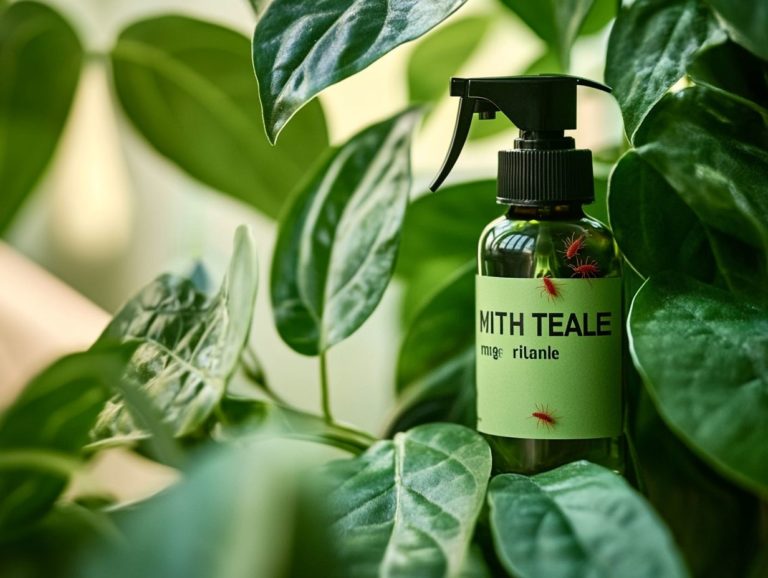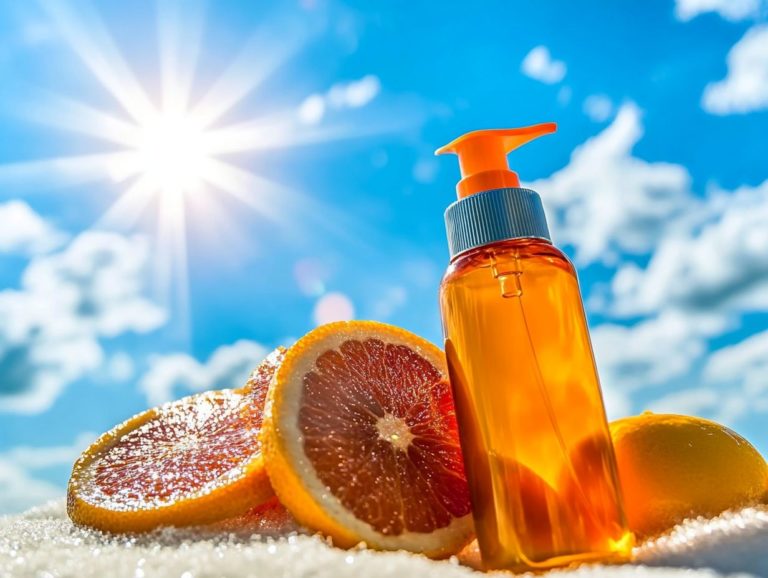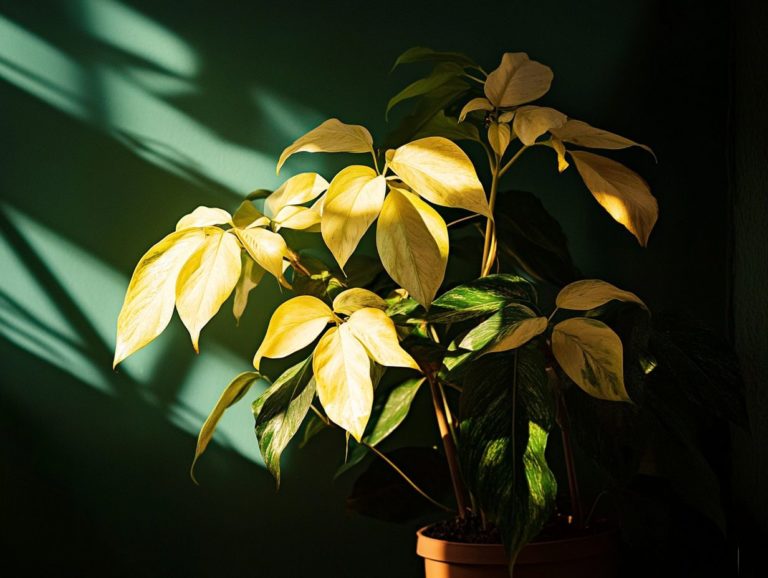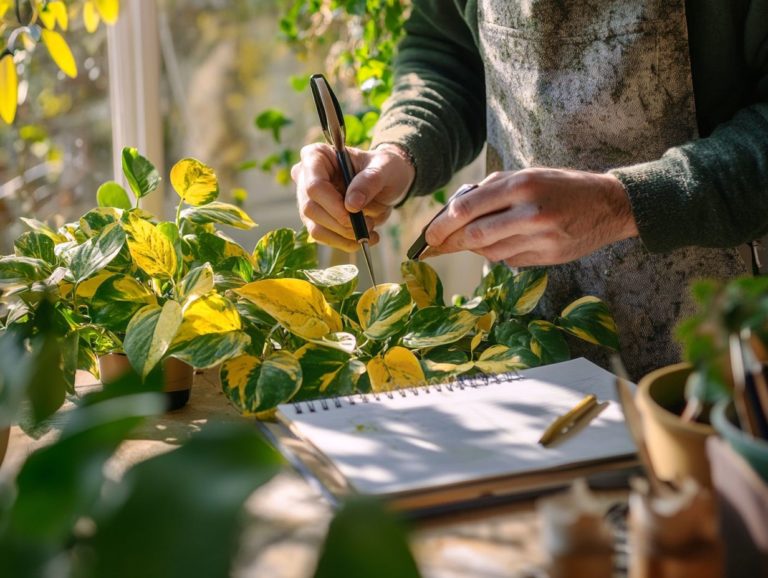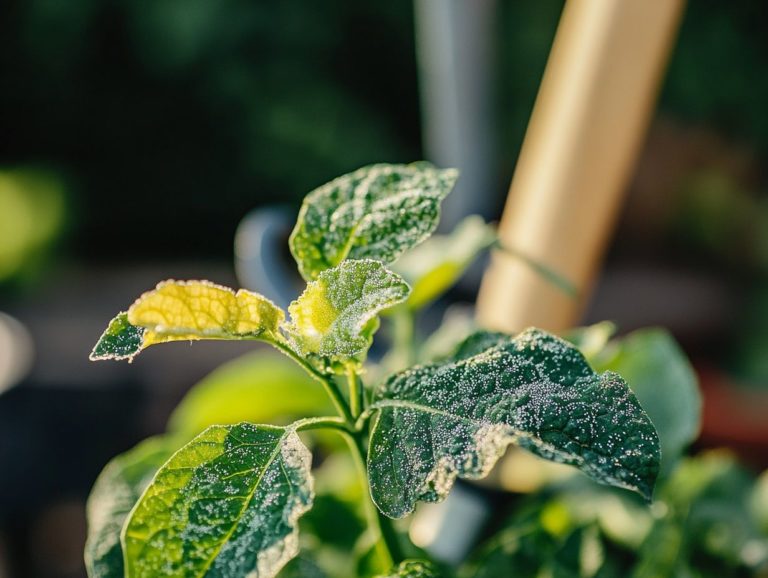How to Identify Indoor Plant Toxicity Symptoms
Indoor plants can undoubtedly enhance the beauty and tranquility of your space, yet they do carry some hidden risks.
Make sure you know which plants might be toxic to safeguard your loved ones, including pets. This article delves into what constitutes a toxic plant, the common symptoms to watch for, and specific varieties to avoid.
You ll also find practical tips for prevention and essential guidance on what steps to take if poisoning occurs. Stay informed to ensure your indoor garden remains a safe and enjoyable haven!
Contents
Key Takeaways:
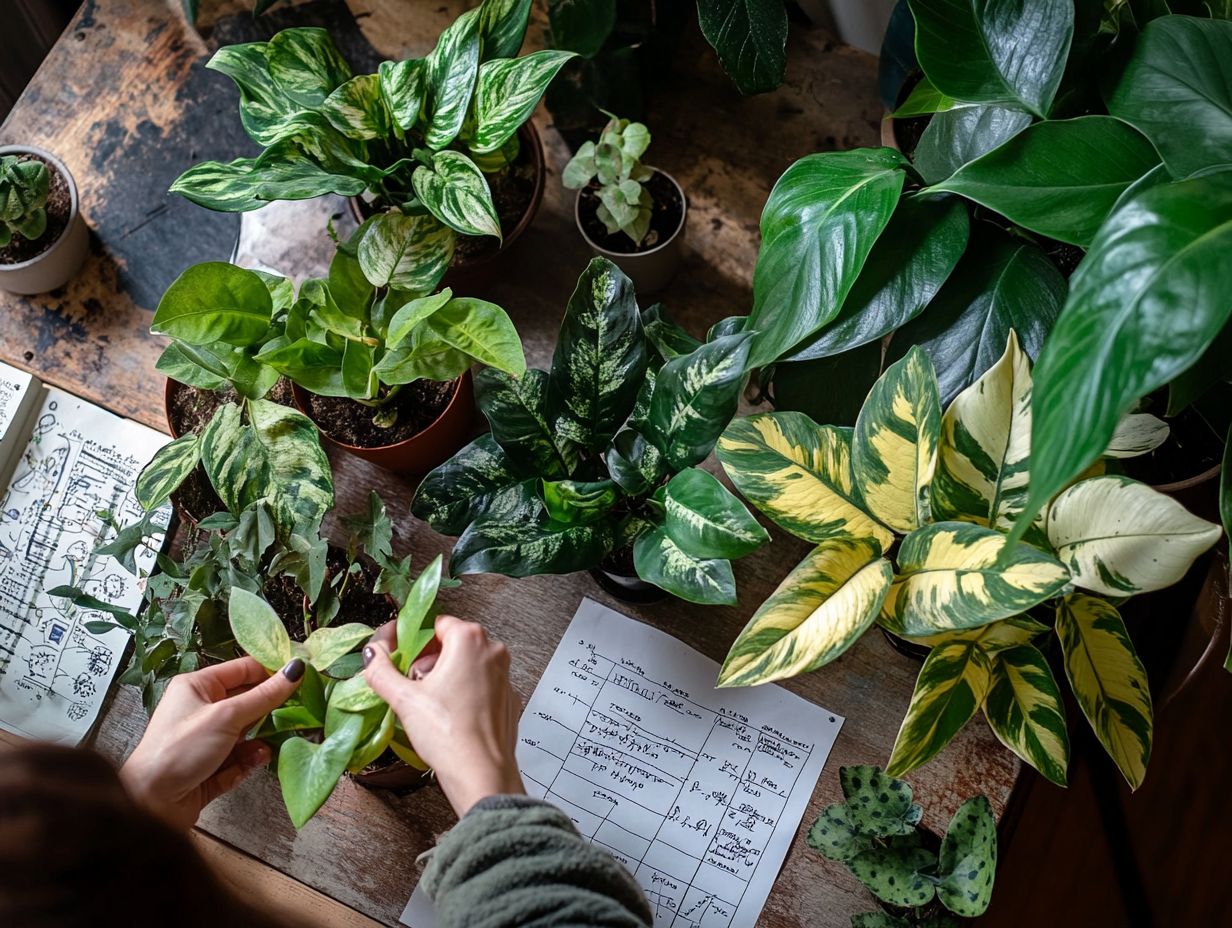
- Be aware of which indoor plants can be toxic and potentially harmful to humans and pets!
- Recognize common symptoms of plant toxicity, such as skin irritation and gastrointestinal issues, and act fast if you notice any signs!
- To prevent plant toxicity, research and carefully select plants for your indoor space, and keep them out of reach of children and pets. Don t take chances with your loved ones research before you buy!
Understanding Indoor Plant Toxicity
Indoor plant toxicity can be a silent threat to your home environment!
As a pet owner or parent, it’s essential to create a safe haven at home. Many popular houseplants, like peace lilies, philodendrons, and English ivy, can actually threaten the health of your pets and children due to their toxic properties.
By taking proactive measures and being vigilant about the symptoms that might arise from ingestion, you can enjoy a stunning indoor garden while maintaining a secure living environment. Make sure you educate yourself about which plants are safe and how to care for them!
What Makes a Plant Toxic?
Plants can become toxic primarily due to the presence of specific substances that may trigger symptoms ranging from mild skin irritation to serious respiratory issues in both you and your pets.
Some common harmful substances include alkaloids, which are natural chemicals found in some plants that can cause illness, and glycosides, which can also be dangerous. For example, alkaloids in plants like the philodendron can lead to gastrointestinal distress, manifesting as vomiting and diarrhea if ingested. Similarly, the sago palm contains glycosides that can lead to liver failure and neurological symptoms, even with just a small amount.
Understanding these dangers is crucial for anyone who might unknowingly expose themselves or their pets to these toxic plants. This highlights the importance of exercising caution and awareness when selecting and caring for flora in your environment.
Common Symptoms of Plant Toxicity
Recognizing the common symptoms of plant toxicity is crucial for timely intervention and treatment, as ingestion can result in various health issues for both pets and children.
Signs such as drooling, vomiting, and diarrhea may suggest potential poisoning from toxic plants like the peace lily or sago palm. In severe cases, symptoms like kidney failure or oral irritation can manifest. For more information on addressing these issues, refer to this quick guide to common indoor plant issues. Immediate action can save lives, so pet owners and parents must remain vigilant about the safety of their indoor plants.
Identifying and Addressing Symptoms
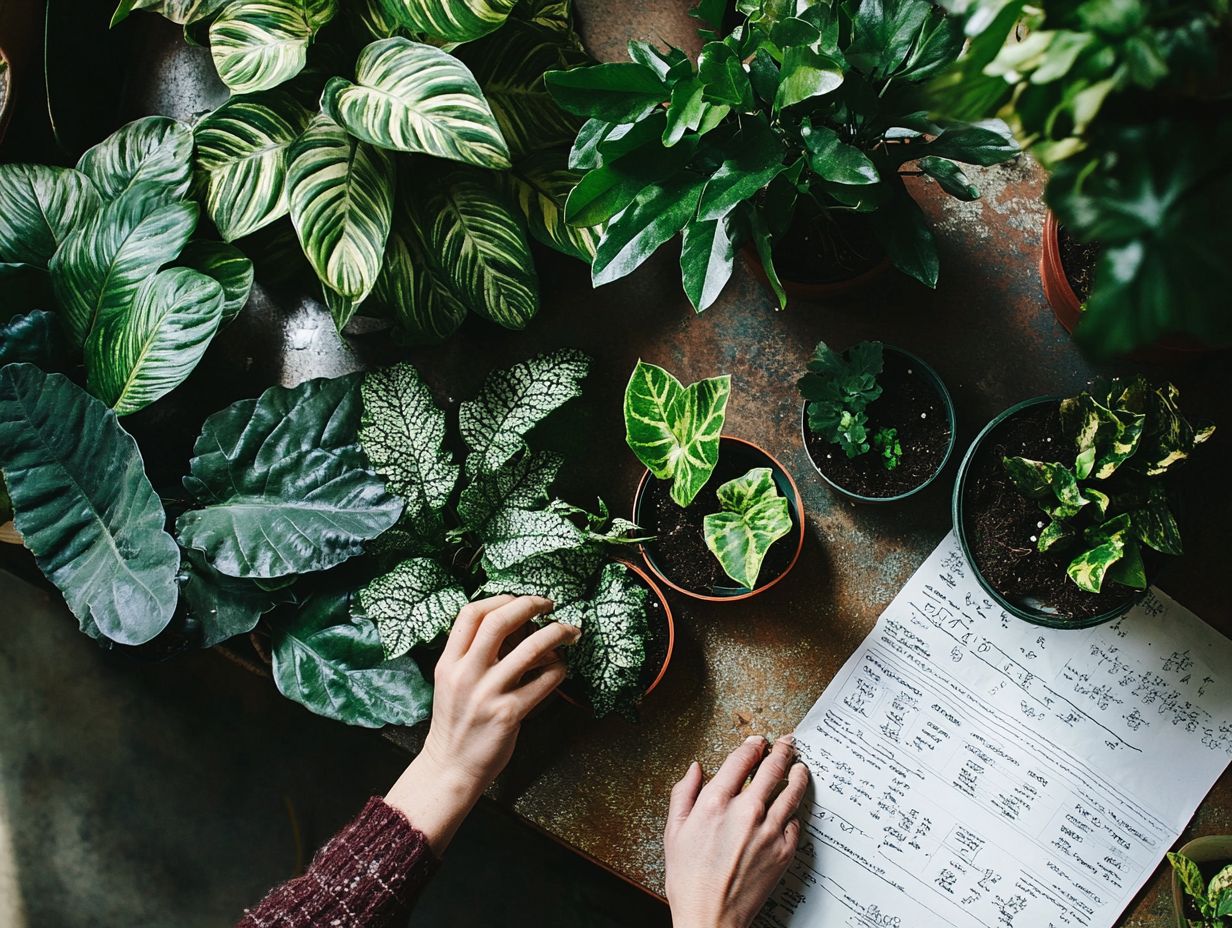
Identifying symptoms of plant toxicity is your critical first step in addressing any potential poisoning incident. Knowing when to seek veterinary care is essential for you as a pet owner.
Recognizing early warning signs is vital, not just for your pets but also for children who might come into contact with harmful plants. Signs like excessive drooling, vomiting, or unusual lethargy should immediately raise alarm bells and prompt you to take swift action.
Certain plants, such as poinsettias and philodendrons, can present unique symptoms. Seeking professional assistance from a veterinarian can ensure your pets receive the tailored care they need, especially in urgent circumstances.
Utilizing resources like the ASPCA Animal Poison Control hotline and local poison control centers can be invaluable for obtaining real-time advice and guidance. By educating yourself about plant toxicity, you can significantly reduce risks for your loved ones and create a safer home environment.
Types of Toxic Plants
Understanding the types of toxic plants commonly found in households is essential for creating a safe environment for both pets and children. While plants like the peace lily, philodendron, English ivy, and sago palm may be admired for their aesthetic appeal, they come with considerable risks due to their poisonous properties.
By recognizing these plants and making informed choices during your houseplant selection, you can achieve a harmonious balance between enhancing your home decor and ensuring the safety of your loved ones.
Indoor Plants to Watch Out For
Some indoor plant species can be more dangerous than others, so it s crucial to be aware of these risks.
For instance, popular choices like the peace lily and philodendron may charm you with their lush foliage, but they can pose toxic threats if ingested. The peace lily, with its elegant white blooms, contains tiny, sharp crystals that can irritate the mouth and throat, leading to painful swelling and difficulty swallowing. Similarly, the philodendron, beloved for its heart-shaped leaves, can trigger symptoms like vomiting and severe oral discomfort.
As a gardener, prioritize plant safety by ensuring these potentially harmful species are kept out of reach from curious pets and children. This fosters a healthier indoor environment.
Preventing Plant Toxicity
Preventing plant toxicity starts with your careful selection of houseplants and proactive measures to protect your pets and children from harmful plants.
Tips for Keeping Your Indoor Plants Safe
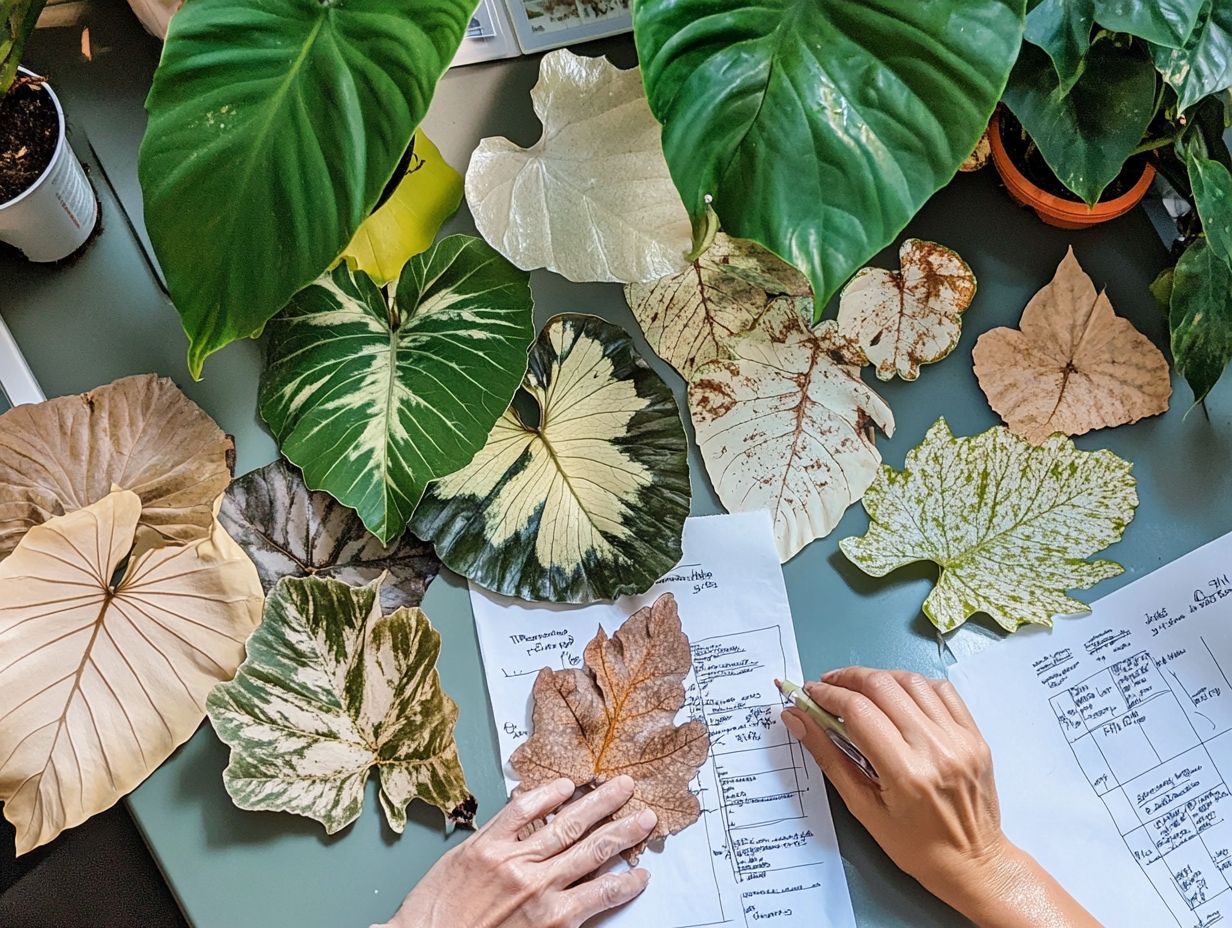
Implementing effective strategies to keep your indoor plants safe can significantly lower the risk of poisoning for your pets and children, making plant care a priority.
By carefully considering where to place your plants and ensuring they are out of reach from those curious paws and little hands, you can cultivate a safer home environment. Regularly monitor for signs of distress in both pets and toddlers, such as unusual chewing habits or behavioral changes, allowing for early intervention if needed.
Nurturing your plants is also important. Select non-toxic plant varieties and use decorative barriers to deter access. Proper watering, adequate sunlight, and routine pest checks will promote their growth, contributing to a healthier atmosphere for everyone in your home.
Treating Plant Toxicity
Effectively addressing plant toxicity can be the distinguishing factor between a minor mishap and a significant health crisis. It is essential for pet owners to be well-informed about the appropriate steps to take in such situations.
Steps to Take if Poisoning Occurs
If poisoning occurs, stay calm and act swiftly by following specific steps to ensure the safety of affected pets or children.
Start by assessing the situation and identifying any potential toxic substances involved, whether they’re household chemicals, poisonous plants, or other hazards.
Recognizing symptoms such as vomiting, lethargy, or unusual behavior is crucial for determining the severity of the poisoning. Don t hesitate to contact a poison control center or a veterinarian for expert guidance tailored to your specific situation.
Be ready to provide details about the suspected poison, including how much was ingested. Your quick details can speed up help when it matters most!
Frequently Asked Questions
What are common indoor plant toxicity symptoms?
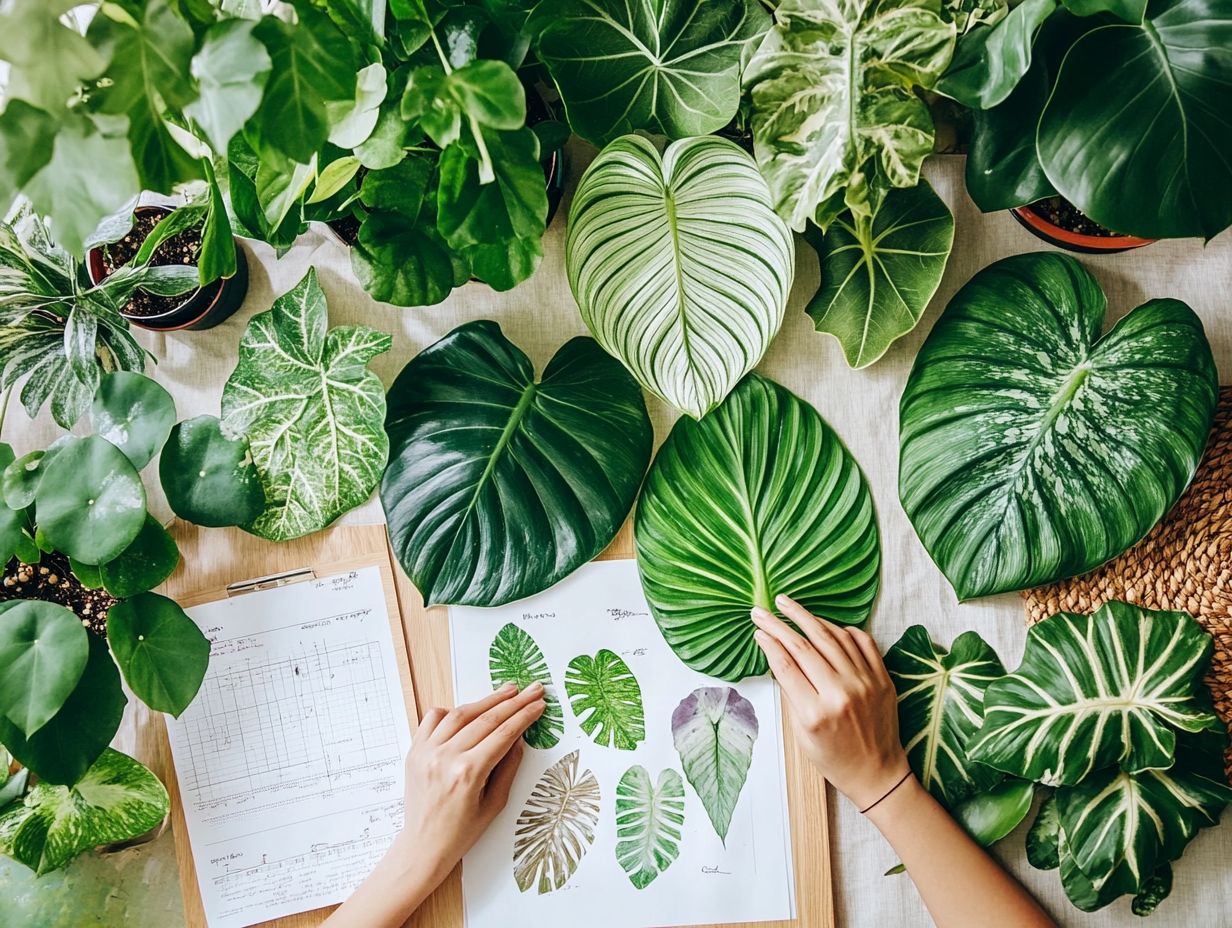
Common symptoms of indoor plant toxicity include wilting, discoloration of leaves, stunted growth, and leaf drop. These can affect the health of both your plants and your pets.
How can I identify indoor plant toxicity symptoms?
To identify indoor plant toxicity symptoms, carefully inspect the plant’s leaves, stems, and soil for any signs of damage or discoloration. You can also research common symptoms for specific types of plants.
Spread the word to keep your loved ones safe!
What causes indoor plant toxicity?
Indoor plant toxicity can arise from various factors. These include overwatering, exposure to harsh chemicals, and eating harmful parts by pets or children.
Certain diseases or pests can also contribute to toxicity.
Can indoor plant toxicity be harmful to humans?
Indoor plant toxicity usually poses little to no harm to humans. However, avoid ingesting any parts of a toxic plant.
If you have concerns, consult a medical professional.
Which indoor plants are known to be toxic?
Common toxic indoor plants include philodendrons, peace lilies, dieffenbachia, and pothos. Research the toxicity of any plants before bringing them home.
What should I do if I suspect indoor plant toxicity?
If you notice symptoms of indoor plant toxicity, such as drooling, vomiting, or diarrhea, remove the plant immediately. Seek professional assistance to ensure the safety of pets and children.
Consult resources like the ASPCA or National Capital Poison Center for guidance on handling and treating the situation.
It’s crucial for pet owners and parents to understand the risks of poisonous plants, such as sago palm and English ivy.
Act fast if you observe any symptoms. Contact a local plant specialist or veterinarian for advice on safely managing the situation.

